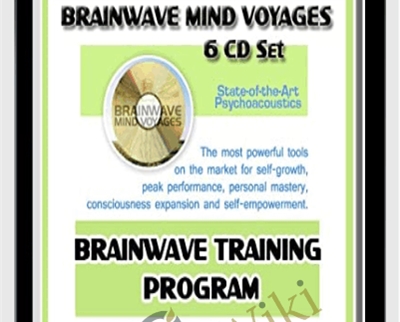Six Sigma Yellow Belt: A Beginners Guide to Six Sigma – AIGPE
Original price was: $99.00.$18.00Current price is: $18.00.
Six Sigma Yellow Belt: A Beginners Guide to Six Sigma – AIGPE Download. Six Sigma is firstly introduced by Bill Smith, Motorolas engineer in 1986 as a mu…
Salepage link: At HERE. Archive:
What is Six Sigma?
Six Sigma is firstly introduced by Bill Smith, Motorola’s engineer in 1986 as a multi tools and techniques for continuous improvement. Then used as a central business strategy in 1995 at General Electric. Since then it is widely used in various industrial and services sectors.
Six Sigma main goal is to continuously improve the process outcome through identifying and eliminating the defects as well as reducing variables within the process. It is a set of statistical tools and methods that are used within Six Sigma projects to reduce defects, increase profits or increase customer satisfaction.
Six Sigma term is associated with process statistics, indicating process maturity by Sigma rating that reflects the free of defects products that it produce. A Six Sigma process means it has chances to have 3.4 defective outcomes per one million opportunities (DPMO).
Six Sigma can be applied using either of methodologies:
DMAIC
? Define: identify the problem that should be resolved. Also define the organizational goals.
? Measure: carefully collect the suitable data from the process.
? Analyze: understand the collected data converting them into information, also define the
root cause of the problem.
? Improve: design and apply the modifications that will reduce chances of error recurrence.
? Control: establish a system that will help you to monitor the changes and adjustments to
keep the improvement you achieved.
Get Six Sigma Yellow Belt: A Beginner’s Guide to Six Sigma – Anonymous, Only Price $33
DMADV
? Define: define the approach to be used and set the project goals.
? Measure: define critical to quality measures and process capabilities.
? Analyze: design and examine process alternatives.
? Design: choose the most suitable process alternative according to customer requirements.
? Verify: make sure that the new design would achieve the needs of the process and get continuous feedback.
What is Lean?
Lean is to add continuous improvement effort to a process, aiming to increase customer
satisfaction. Simply, it is targeting elimination of any step that the customer is not willing to pay money for, focusing on waste removal and streamline the process steps.
Lean can be applied using multiple methods such as:
? Kaizen: continuous improvement
? Kanban: production based on customer’s demand
? Total productive maintenance (TPM): reduction of equipment non-functioning time
? Total quality management (TQM): continuous improvement of quality
? Five S (5S): clean and organize work space
? Poka-Yoke: reducing the possibility of an error to occur
So, Lean can be summarized as a tool to streamline a process by eliminating all unnecessary steps and focus on value adding steps to the production process.
According to Lean we could eliminate eight types of waste: Defects, overproduction, waiting, non-utilized talents, transportation, inventory, motion and extra processing.
Combining Lean and Six Sigma
Lean Six Sigma merges both strategies of Lean and Six Sigma, aiming to increase both the efficiency and quality of the process. Subsequently, Lean is applied to eliminate the process waste then Six Sigma could be used to reduce variation and improve process outcome. Although using different approaches and techniques, both Lean and Six Sigma have the same goals. They are so hard to differentiate; in fact they complete each other’s.
Lean Six Sigma is widely used by various companies worldwide seeking better performance and higher customer satisfaction, either those providing services or producing some products.
Lean Six Sigma practitioners are given belts according to their knowledge and experience as listed:
? Master black belt: with at least two years of experience leading and teaching Lean Six Sigma.
? Black belt: work as full timer Lean Six Sigma project leader.
? Green belt: good understanding and utilization of DMAIC and Lean methodologies and work as part timer in Lean Six Sigma projects.
? Yellow belt: awareness of Lean Six Sigma, can help in data collection and Implementation.
Stop by and contact us at 6Sigma.us and find out how we can positively help you plan and change the culture and operations of your organization. We offer Green Belt and Black Belttraining programs, as well as a Master Black Belt program.
Here's an overview of the prominent keywords and a list of famous authors:
Business and Sales: Explore business strategies, sales skills, entrepreneurship, and brand-building from authors like Joe Wicks, Jillian Michaels, and Tony Horton.
Sports and Fitness: Enhance athleticism, improve health and fitness with guidance from experts like Shaun T, Kayla Itsines, and Yoga with Adriene.
Personal Development: Develop communication skills, time management, creative thinking, and enhance self-awareness from authors like Gretchen Rubin, Simon Sinek, and Marie Kondo.
Technology and Coding: Learn about artificial intelligence, data analytics, programming, and blockchain technology from thought leaders like Neil deGrasse Tyson, Amy Cuddy, and Malcolm Gladwell.
Lifestyle and Wellness: Discover courses on holistic health, yoga, and healthy living from authors like Elizabeth Gilbert, Bill Nye, and Tracy Anderson.
Art and Creativity: Explore the world of art, creativity, and painting with guidance from renowned artists like Bob Ross and others.
All the courses on WSOlib are led by top authors and experts in their respective fields. Rest assured that the knowledge and skills you acquire are reliable and highly applicable.
User Reviews
Only logged in customers who have purchased this product may leave a review.

Original price was: $99.00.$18.00Current price is: $18.00.












There are no reviews yet.